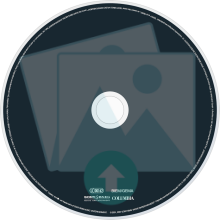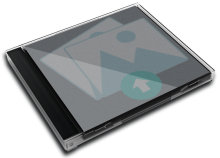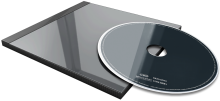
Cover NOT yet available in
Join up for 4K upload/download access
Your Rating (Click a star below)
![]()
![]()
![]()
![]()
![]()
![]()
![]()
![]()
![]()
![]()
Track List
01) A New Day Yesterday
02) Jeffrey Goes to Leicester Square
03) Bourée
04) Back to the Family
05) Look Into the Sun
06) Nothing Is Easy
07) Fat Man
08) We Used to Know
09) Reasons for Waiting
10) For a Thousand Mothers
11) Living in the Past
12) Driving Song
13) Sweet Dream
14) 17
01) A New Day Yesterday
02) Jeffrey Goes to Leicester Square
03) Bourée
04) Back to the Family
05) Look Into the Sun
06) Nothing Is Easy
07) Fat Man
08) We Used to Know
09) Reasons for Waiting
10) For a Thousand Mothers
11) Living in the Past
12) Driving Song
13) Sweet Dream
14) 17
4:11
2:12
3:47
3:53
4:23
4:26
2:52
4:03
4:07
4:21
3:23
2:44
4:05
3:07
Data Complete 60%
Total Rating
Total Rating
![]() (1 users)
(1 users)
Back Cover
CD Art
3D Case
3D Thumb
3D Flat
3D Face
3D Spine
First Released
![]() 1969
1969
![]() Progressive Rock
Progressive Rock
![]() Epic
Epic
![]() Rock/Pop
Rock/Pop
![]() ---
---
![]() Medium
Medium
![]() Album
Album
![]() 0 copies
0 copies
Album Description
Available in:

Stand Up is the second album by Jethro Tull. Before this album, the band's original guitarist Mick Abrahams resigned because of musical differences with Ian Anderson; Abrahams wanted to stay with the blues-rock sound of This Was, while Anderson wished to branch out into other musical forms. Overall, however, the album does remain more broadly in the style of blues rock than future Jethro Tull albums.
Stand Up represents the first album project on which Anderson was in full control of the music and lyrics. It also marks the first appearance of guitarist Martin Barre, who appeared on every Jethro Tull album from this point on. The album goes in a different direction from Ian Anderson's earlier work, revealing influences from Celtic, folk, and classical music. In particular, the song "Fat Man" showed an interest in unusual instrumentation, as Ian Anderson played mandolin, one of the first times the instrument had been used by a rock band. The instrumental "Bourée" (one of Jethro Tull's better-known songs) is a jazzy re-working of "Bourrée in E minor" by J.S. Bach.
The album reached No. 1 on the British charts. The gatefold album cover, in a woodcut style designed by artist James Grashow, originally opened up like a children's pop-up book, so that a cut-out of the band's personnel stood up — evoking the album's title. Stand Up won New Musical Express's award for best album artwork in 1969.
The album was re-issued in 1973 by Chrysalis Records and again in 2001 as a digital remaster. In 1989, an MFSL remaster was released. The album was reissued on 5 Oct 2010 as a deluxe edition including six bonus tracks on disc one, and two additional discs: a disc of live material recorded at Carnegie Hall on 4 November 1970, and a disc with a DTS surround mix.

User Album Review
None...
External Album Reviews
None...
User Comments


Available in:
Stand Up is the second album by Jethro Tull. Before this album, the band's original guitarist Mick Abrahams resigned because of musical differences with Ian Anderson; Abrahams wanted to stay with the blues-rock sound of This Was, while Anderson wished to branch out into other musical forms. Overall, however, the album does remain more broadly in the style of blues rock than future Jethro Tull albums.
Stand Up represents the first album project on which Anderson was in full control of the music and lyrics. It also marks the first appearance of guitarist Martin Barre, who appeared on every Jethro Tull album from this point on. The album goes in a different direction from Ian Anderson's earlier work, revealing influences from Celtic, folk, and classical music. In particular, the song "Fat Man" showed an interest in unusual instrumentation, as Ian Anderson played mandolin, one of the first times the instrument had been used by a rock band. The instrumental "Bourée" (one of Jethro Tull's better-known songs) is a jazzy re-working of "Bourrée in E minor" by J.S. Bach.
The album reached No. 1 on the British charts. The gatefold album cover, in a woodcut style designed by artist James Grashow, originally opened up like a children's pop-up book, so that a cut-out of the band's personnel stood up — evoking the album's title. Stand Up won New Musical Express's award for best album artwork in 1969.
The album was re-issued in 1973 by Chrysalis Records and again in 2001 as a digital remaster. In 1989, an MFSL remaster was released. The album was reissued on 5 Oct 2010 as a deluxe edition including six bonus tracks on disc one, and two additional discs: a disc of live material recorded at Carnegie Hall on 4 November 1970, and a disc with a DTS surround mix.
User Album Review
None...
External Album Reviews
None...
User Comments

No comments yet...

